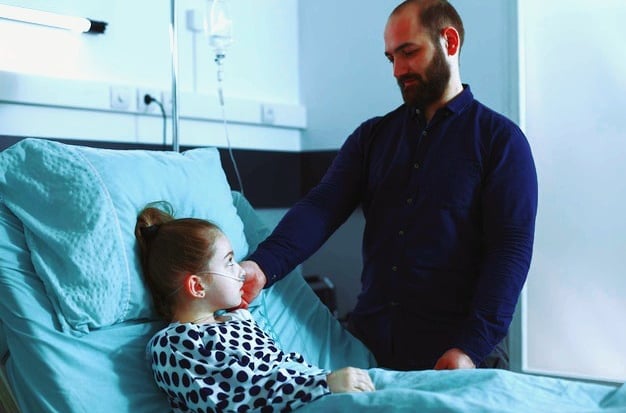Accompany a child in pain
Accompanying a child's pain is a challenging but necessary task. Through active listening, validation of their emotions, physical comfort, creative expression, professional support, promotion of resilience and self-care, we can provide them with the necessary support so that they can navigate this difficult stage in the best way as possible.
KIDS UP
1/29/20242 min read


In the history of humanity, numerous efforts have been made from biology, philosophy and psychology to understand the meaning of pain. Pain is a reality that accompanies our sensitive and finite nature. When a child experiences physical or emotional pain, as parents, we want to do everything we can to prevent it. However, there are times when we cannot change the situation and we find ourselves in the difficult task of accompanying our child's pain.
Accompanying a child's grief can be an overwhelming and challenging experience. It is natural that as parents we want to protect our children from any suffering, but it is also important to recognize that pain is a part of life and an opportunity to grow and learn. Here we present some strategies to navigate this difficult stage:
1. Active listening
The first step to accompany a child's pain is to practice active listening. Allow him to express his feelings and emotions without interruptions or judgment. Give him a safe space to vent and share what he's experiencing. Listen with empathy and show understanding towards her situation.
2. Validation of your emotions
It is important to validate your child's emotions and let him know that it is normal to feel pain and sadness in certain situations. Avoid minimizing or denying her feelings. Instead, acknowledge and validate her emotions, assuring her that you are there to support her through this process.
3. Provides physical comfort
In cases of physical pain, provide physical comfort to your child. You can offer hugs, gentle caresses, or massages to help ease her discomfort. Physical closeness can be comforting and reassuring during difficult times.
4. Encourages creative expression
Creative expression can be a powerful tool for processing emotional pain. Encourage your child to express themselves through art, music, writing, or any other form of expression that feels comfortable to them. This will allow you to channel your emotions in a healthy and constructive way.
5. Seek professional support if necessary
If your child's pain persists or intensifies, it is important to seek professional support. A psychologist or therapist specialized in emotional pain management can give you both the tools necessary to deal with this situation appropriately. Don't hesitate to ask for help if you feel like you can't handle it alone.
6. Promotes resilience
Resilience is the ability to adapt and overcome difficult situations. Help your child develop this skill by encouraging her autonomy, promoting decision making, and providing opportunities to face and overcome challenges. Teach him that pain is a part of life, but that he also has the ability to move forward and grow from these experiences.
7. Take care of yourself
It is essential to remember that, as parents, we also need to take care of ourselves. Accompanying a child's pain can be emotionally exhausting, so it is important to find moments of rest and self-care. Allow yourself to feel your own emotions and seek support from friends, family or support groups that can provide support.
Accompanying a child's pain is a challenging but necessary task. Through active listening, validation of their emotions, physical comfort, creative expression, professional support, promotion of resilience and self-care, we can provide them with the necessary support so that they can navigate this difficult stage in the best way. possible. Remember that each situation is unique and that the most important thing is to be present and show unconditional love towards your child.
